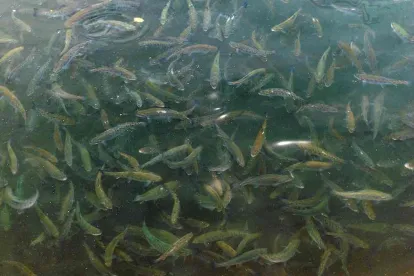The Wisconsin Department of Natural Resources (DNR) has asked Tyco Fire Products, a subsidiary of Johnson Controls, Inc., to expand its sampling of fish for polyfluoroalkyl substances (PFAS). This decision was prompted by initial sampling in privately-owned ponds near Tyco’s fire training facility, which revealed fish with PFAS concentrations high enough to trigger restrictions on consumption. DNR is not issuing a fish consumption advisory because the ponds are not accessible to the public; however, the Wisconsin PFAS sampling request is still a notable development that could have ripple effects on businesses in other states.
Fish samples from the ponds near Tyco’s fire training facility showed that 16 of 26 fish had PFAS concentrations that, if in water accessible to the public, would prompt consumption restrictions ranging from no more than once a week to once a month under guidelines set by the Great Lakes Consortium. The fish samples had PFAS concentrations ranging from .67 parts per billion (ppb) to 144 ppb. For reference, the Wisconsin Department of Health Services recommended a groundwater enforcement standard of 20 parts per trillion (ppt) for perfluorooctanoic acid (PFOA) and perfluorooctane sulfonic acid (PFOS).
Although the DNR is not issuing a fish consumption advisory for the private ponds with fish samples indicating high levels of PFAS, they did ask Tyco to submit a work plan “that evaluates fish from other water bodies, including water bodies that have public access.” Tyco submitted a sampling plan on November 5, 2020, incorporating five additional privately-owned ponds to be sampled. The supplemental sampling plan is currently under review by the DNR.
Wisconsin is one of several states pushing to regulate and remediate PFAS, choosing not to wait on the Environmental Protection Agency (EPA). Thus far, the EPA has only issued a health advisory of 70 ppt of PFAS in drinking water. It is important, however, to consider how the upcoming changes in the administration will impact PFAS regulations both on a state and national level. In President Elect Biden’s plan, he promises to “tackle PFAS pollution by designating PFAS as a hazardous substance, setting enforceable limits for PFAS in the Safe Drinking Water Act, prioritizing substitutes through procurement, and accelerating toxicity studies and research on PFAS.” We can expect that the Biden Administration will have many other hurdles to tackle, such as the pandemic, before being able to focus significant time and energy on regulating and remediating PFAS. This will not stop states from focusing on PFAS, however, so it is important for entities to review the life cycle impacts of your work to ascertain a baseline understanding of your own interactions with PFAS, whether its through goods purchased, packaging used, remediation on real property, and/or how and where you disposed of your waste.




 />i
/>i

